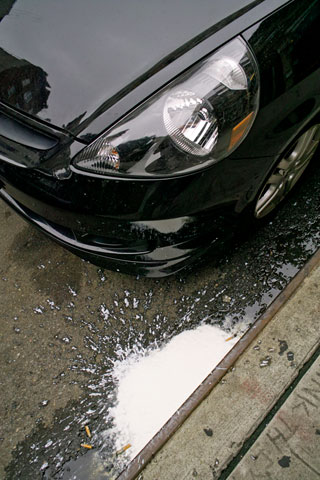
East 4th Street — © Brian Rose
White splash on 4th Street.
Please support Time and Space on the Lower East Side by clicking on the Kickstarter badge at right.
Today I am taking the plunge and launching my kickstarter campaign to raise money for the publishing of Time and Space on the Lower East Side. Please watch the video and visit the project page on the kickstarter website.
The campaign will last 45 days and I hope to raise at least $10,000. Donate whatever you can. But for $50 you can make real contribution by, in effect, pre-ordering a copy of the book.
Time and Space is the culmination of a project that began in 1980 when I photographed the Lower East Side in collaboration with photographer Ed Fausty. We documented the neighborhood at its darkest but, perhaps, most creative time. While buildings crumbled and burned, musicians and artists worked to express the edgy quality of the place.
In 2005 I returned to photographing the Lower East Side working alone this time. The result is a book spanning three decades of history, originally available through Blurb the online platform for creating photo books. I am working now with Golden Section Publishing, a new independent publisher headed by photographer Bill Diodato. With your help, the book will be completed this year and available in stores and online early in 2012.
The WTC montage is up and it looks pretty cool. Don’t miss the opening reception this Wednesday. There will be nine WTC images on exhibit in the cafe, which is directly across the street from the installation. Hopefully, the weather will allow for outdoor mingling.
FAB cafe
77 East 4th Street
Wednesday, September 28
7-9PM
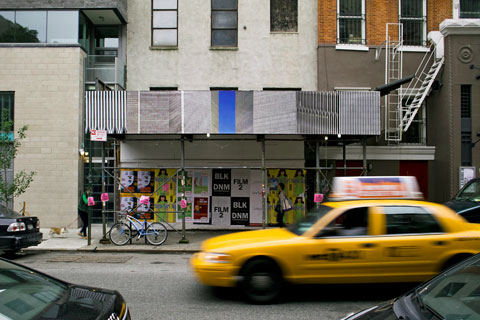
WTC, E4th Street between the Bowery and Second Avenue — © Brian Rose
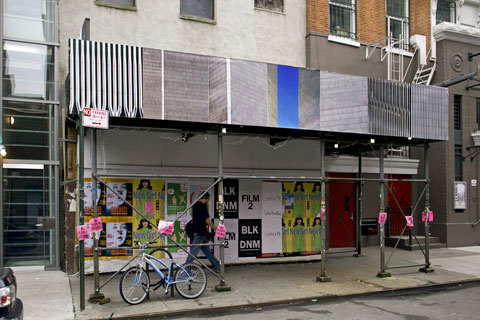
WTC, E4th Street between the Bowery and Second Avenue — © Brian Rose
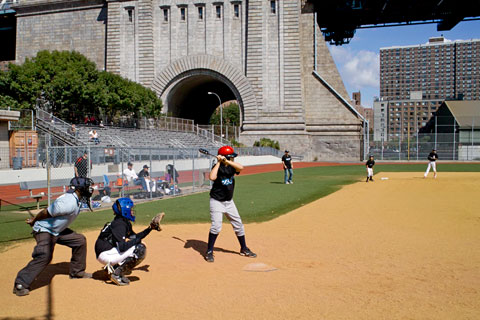
Brendan, my son, at bat under the Manhattan Bridge on the Lower East Side
© Brian Rose
It’s time to step up to the plate and take charge. Several years have gone by since I introduced my book proposal, Time and Space on the Lower East Side. At this point it is clear that nothing is going to happen with this book unless I take the initiative. In recent months I have been talking with Bill Diodato, a photographer and book publisher. He has produced his own extraordinary book, Care of Ward 81 (slide video here), and is now taking on new projects as Golden Section Publishing. My book will be the first.
We do not have a lot of money to work with, so I am hoping to raise a part of it via kickstarter, the internet fundraising platform–which, by the way, has its offices on the Lower East Side. I will be launching the campaign this weekend and it will run 45 days. My goal is $8,500, or more.
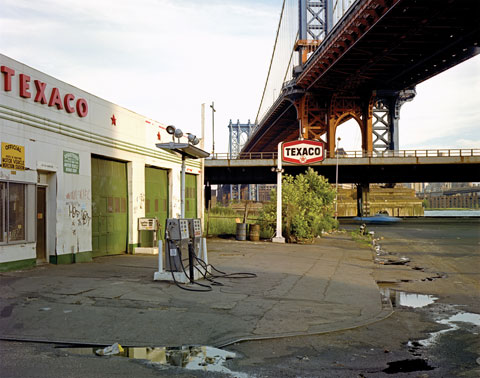
Under the Manhattan Bridge, 1980 (4×5 film) – © Brian Rose/Ed Fausty
Once the campaign is launched I will be sending out personal email requests for support, and I will provide a link here to my kickstarter project page. There will be many different levels of support available to fit all budgets.
Time and Space on the Lower East Side is a portrait of one of America’s most important neighborhoods spanning three tumultuous decades. The project was initiated in the early days of color art photography, and includes view camera scenes of the Lower East Side in 1980, when the neighborhood was burning and crumbling, when artists and musicians celebrated the edgy, if not dangerous, nature of the place. I have since rephotographed the Lower East Side, post-911, a much gentrified, but still fascinating part of New York.
It has never been easy getting photography books published. It took years for me to get the Lost Border published, which by the way, has sold over 2,500 copies. That may not sound like much, but it is in fact a very respectable showing for a serious fine art photo book. Not that it mattered when I sought a publisher for Time and Space.
I have worked too hard and too long to be defeated by a publishing industry increasingly incapable of discerning important work and marketing it. With your support, I will get this book out, online and in stores, by the beginning of 2012.
Berlin by Mitch Epstein
I picked up Mitch Epstein’s Berlin recently. Published by Steidl, it is the product of a six month residency at the American Academy in Berlin. Epstein writes in the introduction about his Jewish family’s refusal to visit Germany, and how he first went there at the age of 49 to work with Steidl and to mount several exhibitions. Surprisingly, Germans had become some of his staunchest allies. He describes Berlin as ” more complicated and poignant” than any city he had known save Hanoi.
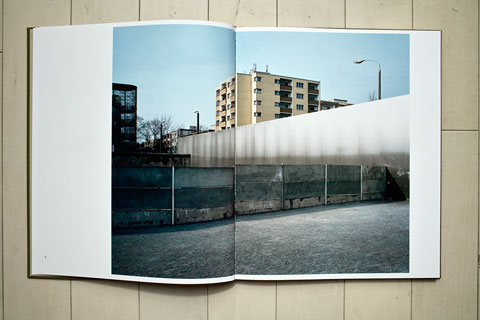
Berlin Wall Memorial on Bernauerstrasse – © Mitch Epstein
As you can imagine, given my decades long commitment to photographing Berlin and its Wall–the real concrete one that came down in 1989, and the ongoing Wall of the imagination and historical presence–I was interested in what Epstein would bring to the subject. I have never met Mitch, though we both went to Cooper Union in the 1970s–he a couple of years before me. And I have always had the highest regard for his work, especially his recent book American Power, an extraordinary journey across the United States focused on the use and abuse of energy.
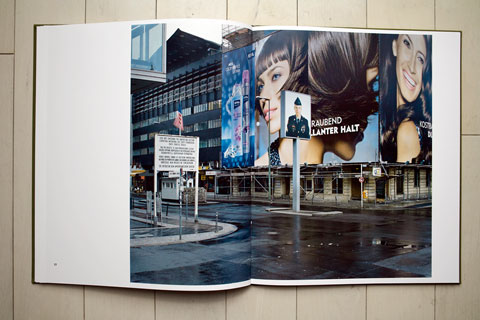
Checkpoint Charlie – © Mitch Epstein
I love Epstein’s photograph of Checkpoint Charlie, one of the most historically charged places in Berlin , the former Allied border crossing and scene of Cold War standoffs with the Soviets. It’s a perfect depiction of one of the the things I find fascinating about Berlin–deep and sobering history juxtaposed with crass commercialism and touristy kitsch. Berlin, the book, is a compilation of historical sites, many famous or infamous, others only known to those who have done the kind of research Epstein did.
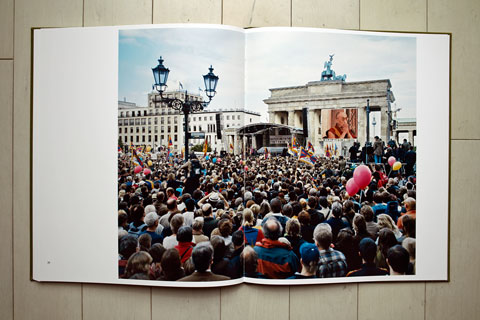
The Dalai Lama at the Brandenburg Gate – © Mitch Epstein
Only a few of the photographs show the urban vibrancy of Berlin, a missing element, perhaps, but it is absolutely true that one can find oneself utterly alone at times in this vast and dispersed metropolis. There are abundant open spaces–former industrial wastelands and abandoned railroad yards–and the grassy ribbons of land where the Wall and death strip once ran. Berlin is still a semi-cultivated city, a wild tangle of layered past and present, resistant somehow to the homogenizing power of money, which has sanitized so many other cities, especially in western Germany.
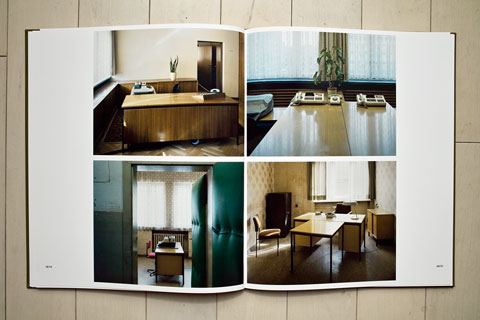
Stasi offices and interrogation rooms – © Mitch Epstein
As much as I like the photographs in Berlin, and I applaud its overall intent, I find this an oddly incomplete book–and not just because it offers only 37 images. The historical importance of each site photographed is clearly noted and visually explicated, but sometimes I sense that Epstein could not quite find a way to express the complex nature of the Berlin he alludes to in his introduction. Epstein does provide occasional glimpses of the new Berlin, a city in the midst of civic and cultural reinvention, however obliquely. But the limited scope of the pictures gives the book the feel of an exhibition catalogue.
Epstein stumbled upon the scene above. There is no specific historic site here. But we are in the heart of the city in a large open plain with communist era housing blocks in the distance. Circus elephants caper about the field as if they have been transplanted from the African Savannah. Berlin, the city, is full of these moments of lyrical strangeness–I wish there was a little more of it in Berlin, the book.
Nevertheless, there are few photographers of Mitch Epstein’s creative intelligence and visual acuity, and those attributes are amply evident throughout Berlin.
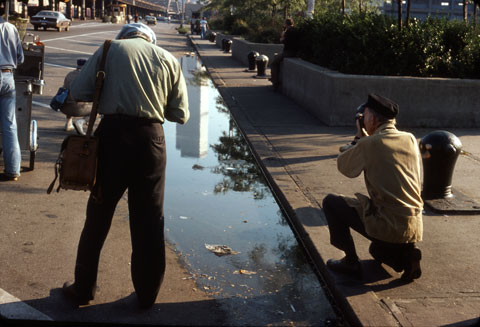
WTC reflection, 1978 — © Brian Rose
•CNN audio interview
•Full CNN article
•The book: WTC
• Blurb “Book of the Week
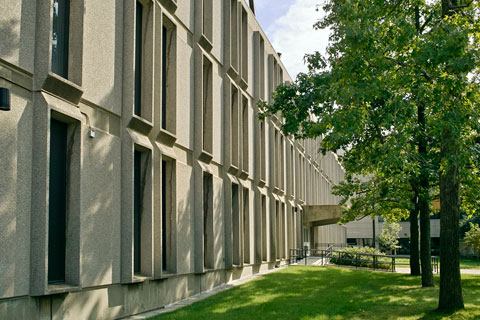
Rutgers University, Newark campus — © Brian Rose
Friday I was on assignment in Newark photographing a couple of renovated classrooms at Rutgers University. The campus, adjacent to downtown is a hodgepodge of different architectural styles built at different times, but the central campus was constructed in the late 60s/early 70s in what is commonly referred to as brutalism. I’ve written about brutalism before with regards to a Robert Geddes building at the Institute for Advanced Study in Princeton, a sublime example of a much maligned architectural movement.
It can be a hard to love architecture in that it typically utilizes raw concrete poured into wooden forms–beton brut is the original French term–and many people find it cold, even forbidding. But some of the great architects of the 20th century worked in this idiom including Corbusier and Louis Kahn.
The Rutgers campus in Newark isn’t likely to be compared to Kahn’s Salk Institute, but it is, nevertheless, a fine example of brutalism used to create a sensitively scaled urban environment. Alas, I cannot find a single reference to the architecture of the campus on the internet other than in passing references to urban renewal and the racial tensions present in Newark at the time.
I will ask around and hopefully report back with the name of the architect or firm that did the project. If anyone knows, by all means speak up. The photo above shows only one of the buildings (Boyden Hall), taken as I was leaving the job, which fronts on University Avenue.
Update:
I’ve been able to find out at least partial information about the Rutgers Newark campus. I read online that Grad and Grad (later the Grad Partnership) had proposed high rises for the urban renewal area that became the campus. That plan was apparently scuttled, but Grad continued to play a role in the project designing various buildings including the Robeson Campus Center.
According to David Nelson, an architect who emailed me earlier today, “Boyden and Conklin Halls, and the Dana Library, were designed by Kelly & Gruzen (now Gruzen Samton), with offices in New York and Maplewood, NJ. The drawings are dated 1964.” Gruzen has been a leading architectural firm in NYC for many years.
Up above I praised a building by Robert Geddes on the campus of the Institute for Advanced Study in Princeton, and sure enough, Hill Hall, one of the most interesting of the Rutgers structures is by Geddes Brecher Qualls Cunningham–the same Geddes. I still don’t know who was responsible for the master plan, but I am pleased to discover that the individual buildings were designed by some of the leading architects of the 1960s. It is a time period in architectural history that is often undervalued, and accordingly, the Rutgers Newark campus deserves more appreciation. If I get back there again, I’ll take some more photographs.
I’ve been browsing the local blogs for how the neighborhood fared in the aftermath of Hurricane Irene. Although some water sloshed over the seawall along the East River, the biggest damage seems to be fallen trees, as much the result of water saturated soil as wind, which was not extraordinarily strong.
Via EV Grieve, I see that a willow tree that I photographed in a neighborhood park called La Plaza Cultural at 9th Street and Avenue C toppled in the storm. This photograph, which prominently features the fallen tree, is one of my favorites from the recent phase of the Lower East Side project:
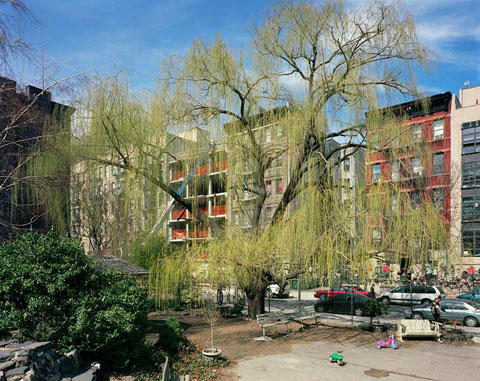
E9th Street and Avenue C (4×5 film) — © Brian Rose
As I’ve written elsewhere, I seem to be in the business of photographing things that are soon erased from the earth. But let’s not get too dramatic about it.
A Willow in a small New York park–fed, perhaps, by an underground stream–is not among the most permanent of things. Nevertheless, I feel the loss, and I expect many in the neighborhood will miss this great tree.
From the New York Times website
A moment of zen via the New York Times as we await the arrival of a large, but not particularly ferocious hurricane. Good sense dictates that immediately vulnerable coastal areas be evacuated. Beaches in the city and on Long Island for sure. But Battery Park City, the East Village projects, and the high rises on the Williamsburg waterfront? All are located in the red zone A on the map above. (I’m presently in the small white area at lower right.) As with all storms in the city–nor’easters and the like–best not to walk around outside when there are high winds. I’ll be hunkered down in my apartment until the show (nature and media) is over.
Update:
First signs of approaching storm in New York at 10pm–thunder and lightening. Reports of extensive flooding on the back end of the storm from the Outer Banks of North Carolina. A very different geographical configuration here, and a weaker storm, we can only wait and see how much water gets pushed into the harbor and the Long Island Sound to the north. Friends of mine just bought a house on the beach in Connecticut right in the expected path of the storm.
Update:
Things are winding down with some gusts of wind from the backside of the storm. Some flooding in low lying areas including stretches of the FDR drive along the East River in Manhattan. There are trees down all over. For those close to the beaches, or with homes in flood prone areas, the storm was no joke. But to the majority of us in the city, it was just another windy rainy day.
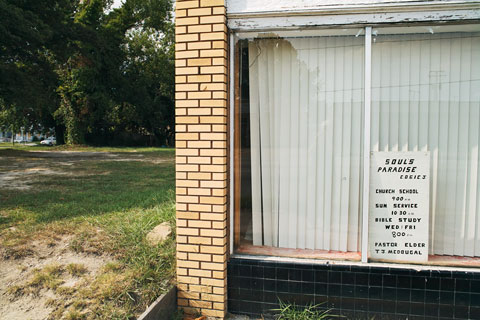
High Street, Portsmouth, Virginia — © Brian Rose
My mother, sister, and I drove around the Hampton Roads area revisiting places where we once lived, or places that held some significance. Near the picture above, I remember–at age 4–going to a bowling alley above an A&P supermarket. My mother was a competitive duckpin bowler in those days. I remember the pins were set by hand–by young black boys. It was a segregated city then, and it is still. The whites have moved out except for the beautifully preserved Old Town, and much of the city looks like a smaller version of Detroit.